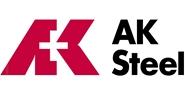Market Segment

June 20, 2014
AK Steel Provides Q2 2014 Guidance
Written by Brett Linton
AK Steel (NYSE: AKS) provided guidance for its Q2 2014 financial results today. The full press release can be viewed here. Below are key sections of the report:
AK Steel said it “expects to report a net loss of $0.19 to $0.23 per diluted share of common stock, which is a substantial improvement over its first quarter results.” Their adjusted net loss for the Q2 would be $0.02 to $0.06 per diluted share if the loss of $0.17 per diluted share for mark-to-market losses on derivatives is excluded.
The release noted that “although it [the company] has generally experienced improved conditions in the steel markets it serves, its second quarter results will be negatively impacted by the lingering effects of the extreme winter weather conditions and by the adverse impact of mark-to-market hedging losses, which the company expects will be substantially offset in the second half of 2014 by lower costs for commodities or by gains in its hedging positions.”
AK Steel anticipates shipments of approximately 1,375,000 tons in the Q2 2014, up 9 percent from the 1,262,100 tons in the Q1 2014. “Though improved, shipment levels for the second quarter reflect the effects of the extreme winter weather conditions discussed below and reduced production at the company’s Ashland Works blast furnace due to recent operational issues.”
AK Steel expects Q2 prices to remain flat compared to those of Q1, saying that, “While spot prices for carbon steel products and many of the Company’s specialty steel products have increased, the company’s overall average selling price has not changed significantly due to a change in product mix. In particular, a higher percentage of the company’s total product shipments in the second quarter have been to the carbon spot market.”
AK Steel realizes they may face higher costs in Q2 as a result of the long lasting extreme cold weather conditions experienced in the first quarter. “Those conditions resulted in an extraordinarily high level of ice coverage on the Great Lakes, which delayed the start of the 2014 shipping season and affected the movement of Canadian iron ore. As a result, the available supply of iron ore to the steel industry in the second quarter was less than had been anticipated and the company had to reduce the production rate at its blast furnaces to match production levels to the available supply of iron ore. The company also experienced higher transportation costs for the iron ore pellets it received in the second quarter. The company estimates that the effect of these issues will result in additional costs of approximately $15 million, or pre-tax $0.11 per diluted share, in the second quarter.”
The Q2 2014 earnings conference call webcast is scheduled for Tuesday, July 29th 2014 and can be accessed here.







